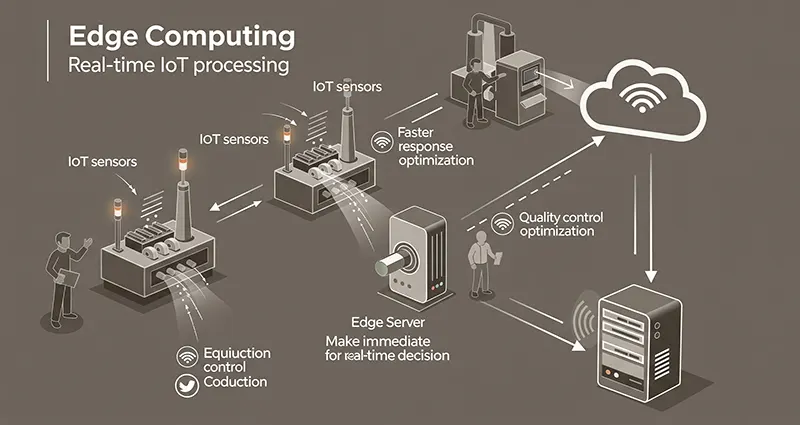In the age of Industry 4.0, the Internet of Things (IoT) has revolutionized the way data is generated, collected, and utilized across various domains, from manufacturing and healthcare to smart cities and transportation. As the volume of IoT-generated data continues to soar, the need for real-time processing and analysis has become paramount. This is where edge computing emerges as a critical enabler, offering decentralized data processing capabilities that are essential for fulfilling the requirements of real-time IoT applications.
Understanding Edge Computing
At its core, edge computing involves processing and analyzing data closer to the source of generation, typically at or near the “edge” of the network, rather than relying solely on centralized cloud-based systems. This decentralized approach brings computation and storage capabilities closer to IoT devices, allowing for faster data processing, reduced latency, and enhanced responsiveness.
Real-Time Data Processing
One of the primary roles of edge computing in the IoT ecosystem is its ability to enable real-time data processing. By leveraging edge nodes or devices equipped with computing power and storage capacity, organizations can process and analyze data locally, in close proximity to where it is generated. This proximity minimizes the latency associated with transmitting data to distant cloud servers and enables real-time decision-making based on freshly processed information.
Bandwidth Optimization
Edge computing plays a vital role in optimizing network bandwidth by reducing the volume of data that needs to be transmitted to centralized cloud infrastructure. In IoT environments, where a multitude of sensors and connected devices continuously generate data, edge computing allows for on-device processing and filtering of data, sending only relevant and valuable insights to the cloud. This not only conserves bandwidth but also mitigates network congestion and reduces the overall cost of data transmission.
Enhanced Security and Privacy
The deployment of edge computing for real-time IoT data processing contributes to improved security and privacy. By processing sensitive data locally, organizations can implement robust security measures at the edge to protect information before it is transmitted across the network. This approach reduces the exposure of sensitive data during transit and minimizes potential vulnerabilities associated with sending all IoT-generated data to centralized cloud servers.
Scalability and Flexibility
Edge computing infrastructure offers scalability and flexibility in accommodating diverse IoT deployments. Organizations can distribute edge nodes across different locations, such as manufacturing facilities, smart buildings, or remote installations, tailoring the computational resources to specific IoT use cases. This distributed architecture supports the dynamic scaling of computing resources based on varying workloads and ensures that real-time data processing capabilities can be seamlessly adapted to evolving IoT environments.
Enabling Autonomous Decision-Making
In real-time IoT applications, particularly in critical scenarios such as autonomous vehicles or industrial automation, edge computing facilitates autonomous decision-making at the edge. By enabling edge devices to process and respond to data in real time, without the need for continuous communication with centralized servers, organizations can achieve greater operational autonomy and responsiveness, leading to enhanced efficiency and safety in IoT-driven processes.
The Future of Real-Time IoT Data Processing
As the proliferation of IoT devices continues to accelerate, the role of edge computing in real-time data processing will only become more pronounced. The convergence of edge computing and IoT is poised to drive innovation across industries, enabling transformative applications such as real-time monitoring, predictive maintenance, and intelligent control systems that leverage the power of decentralized data processing and analysis.
The role of edge computing in real-time IoT data processing is indispensable for unleashing the full potential of IoT applications. By bringing computational capabilities closer to the point of data generation, edge computing not only accelerates real-time decision-making but also enhances security, bandwidth optimization, and the overall scalability of IoT deployments. As organizations increasingly embrace the capabilities of edge computing, the synergy between edge and IoT will continue to be a driving force behind the next wave of digital transformation and innovation.









